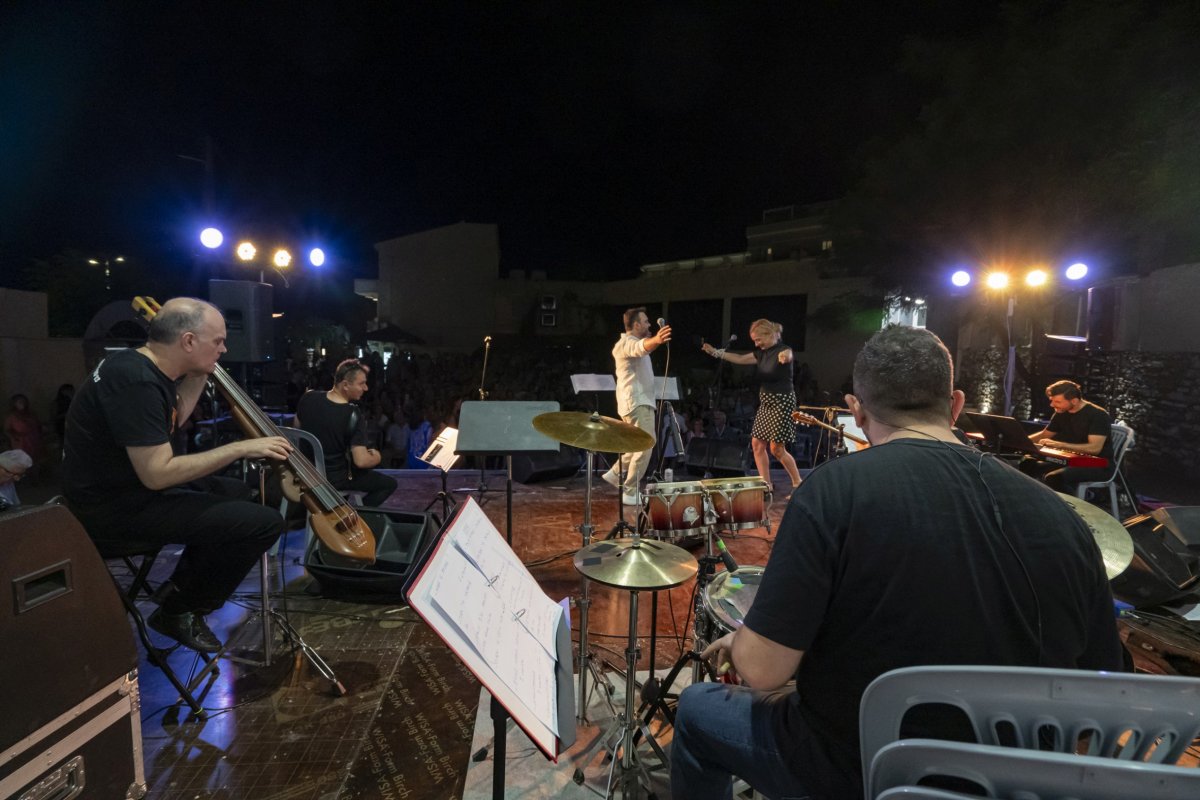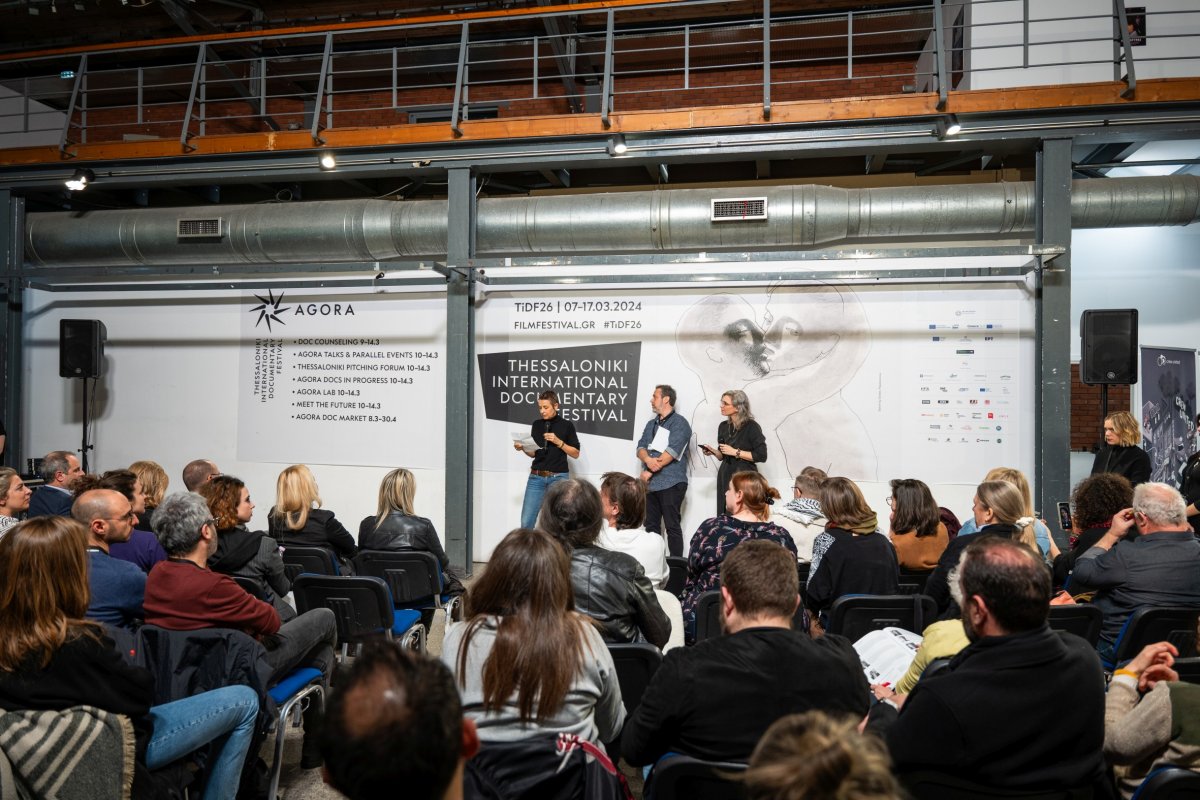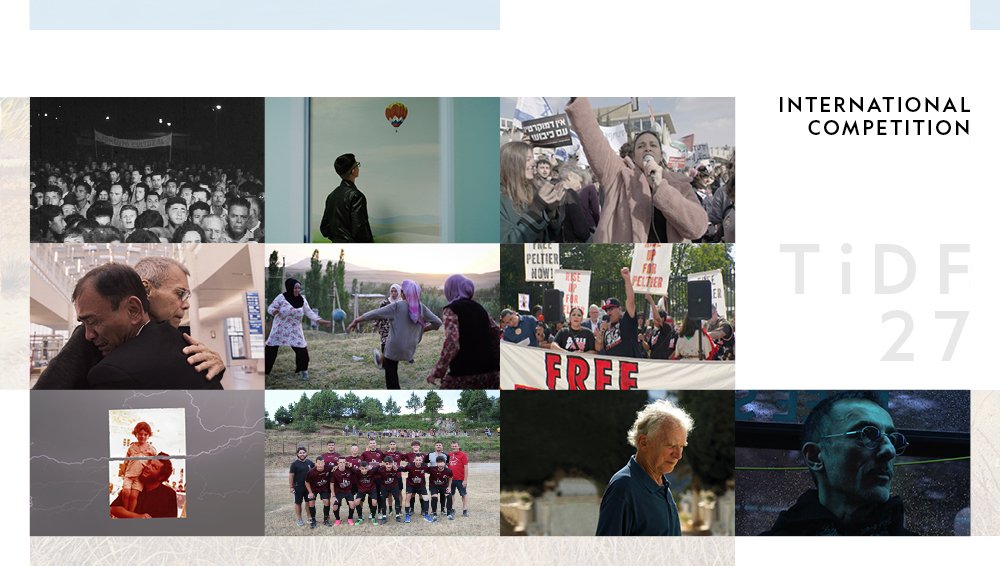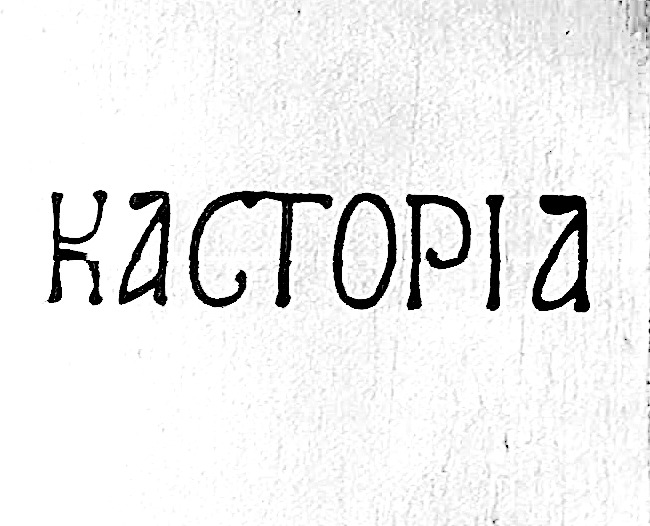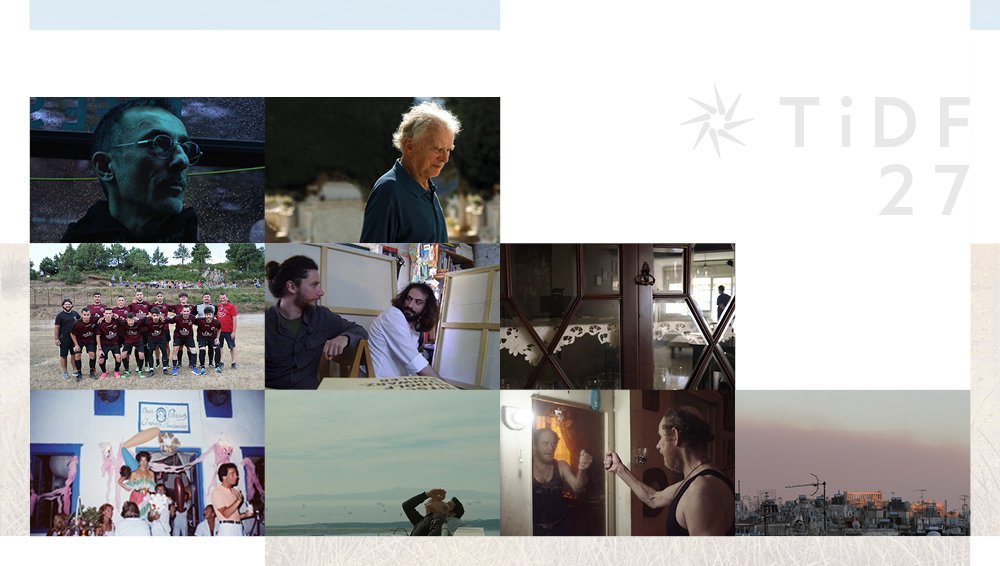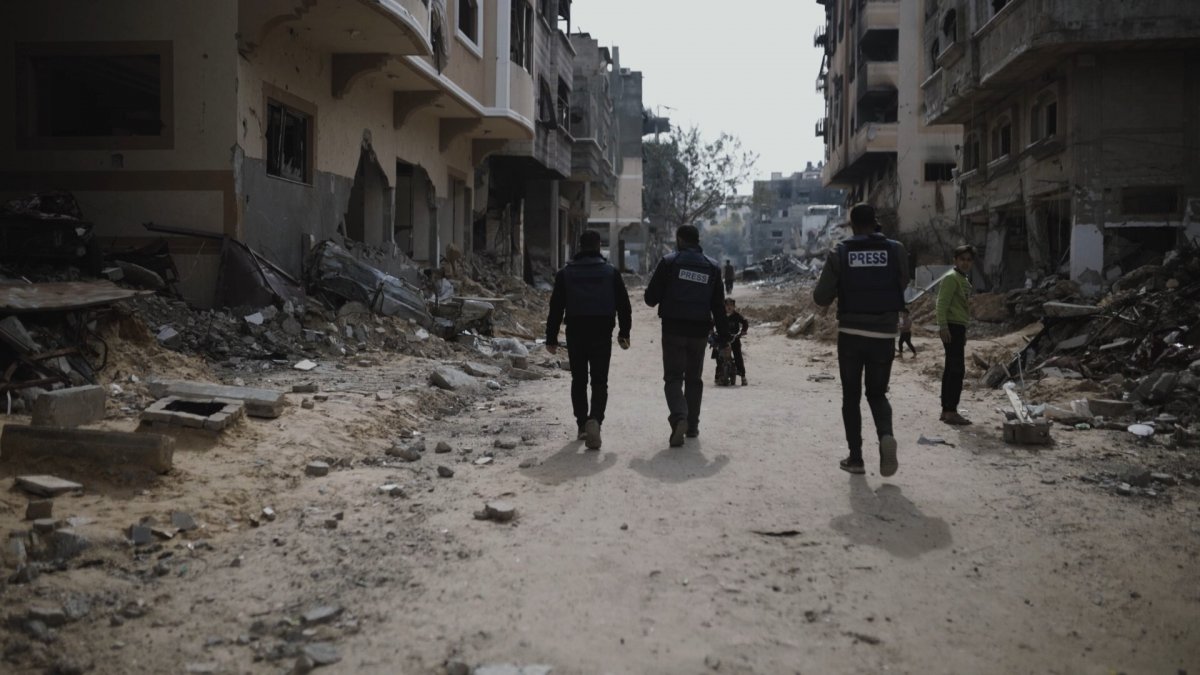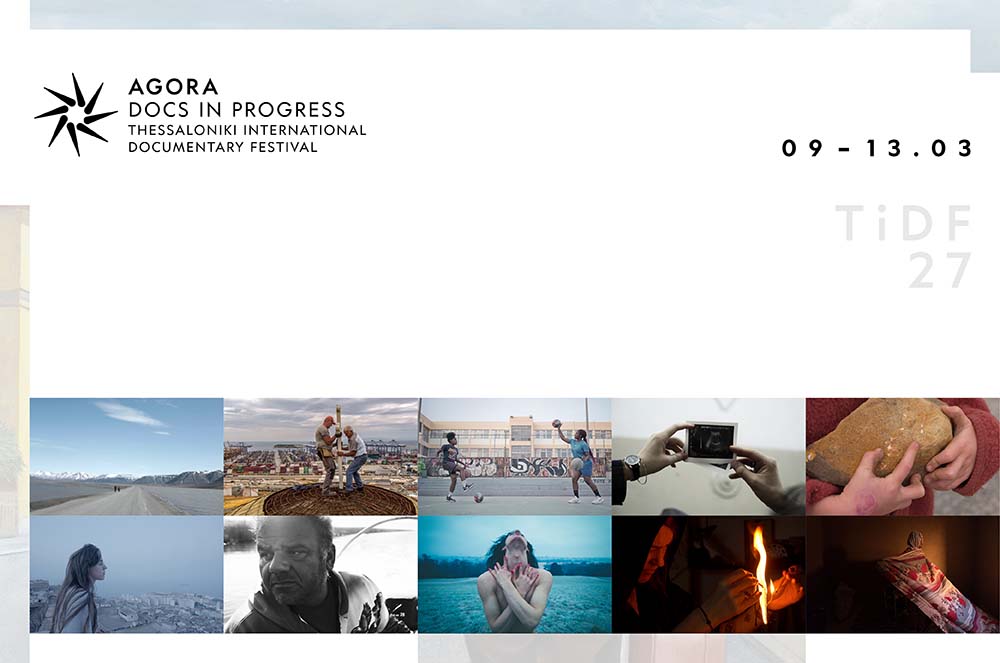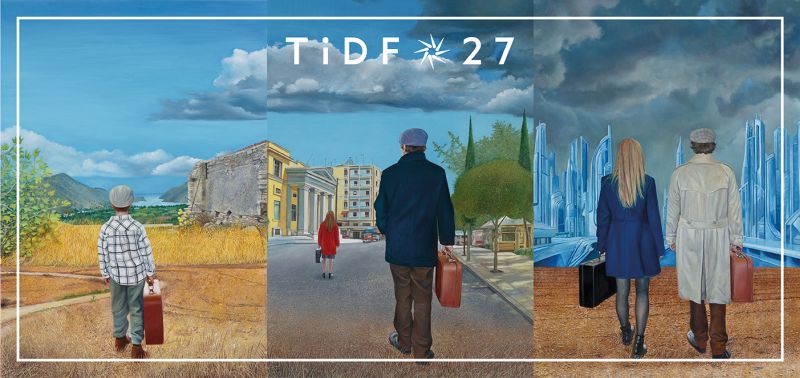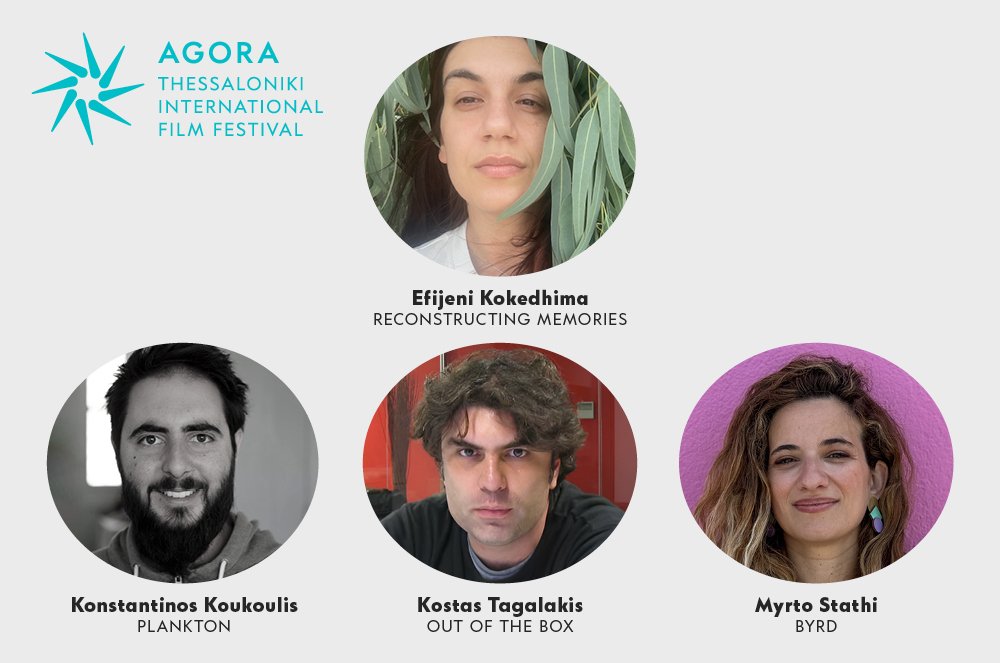On Saturday 6th, July the 3rd Evia Film Project called it a wrap, the green initiative of the Thessaloniki Film Festival. The five-day celebration of green cinema included, among other things, film screenings, open discussions, activities for film professionals from all over the world and guided tours. Let's get a taste of all that happened on the final day:
Concert by Lena Kitsopoulou - Doros Dimosthenous
Evia Film Project wrapped up its events in Edipsos, at Ciné Apollon, with a special concert delivered by Lena Kitsopoulou, Doros Dimosthenous, and an eclectic group of musicians.
The audience was welcomed by the Artistic Director of the Thessaloniki Film Festival, Orestis Andreadakis, who thanked the sponsors and supporters of the Evia Film Project, the local government and in particular the municipalities of Istiaea-Edipsos and Mantoudi-Limni-Agia Anna, as well as the Board of Directors and the employees of the Thessaloniki Film Festival.
Masterclass by Kostis Maraveyas
Beloved musician and singer Kostis Maraveyas returned to Evia Film Project for a masterclass on music for the screen, explaining the terms in which cinema can give a helping hand to the narrative and visual world, while he also spoke about the musical score he wrote for the hit TV series Milky Way by Vasilis Kekatos.
Kostis Maraveyas analyzed the way he teams up with film and stage directors, from the moment of identifying the scenes that call out for a musical touch up until the final selection of sounds and composition. Kicking off the discussion, he said that he doesn’t speak as a musician, but rather as a cinephile to emerging filmmakers. He stressed that he considers it essential for every filmmaker to know music, to understand the methods of musical composition in order to be able to seamlessly communicate with each composer.
“Music, in contrast with cinema, painting, or photography isn’t a visual art, and as such lacks objective references in terms of image. We don’t have objective reference points for something in particular. Thus, an issue arises as to how music is involved in a visual universe: it certainly should not be done in a manner that is rushed, intruding, interfering," he noted.
Next, he posed the question of whether music is ultimately necessary in cinema, remarking humorously: “In every situation there exists a musicality, let's not ruin everything by inserting music!" He divided the musical genres in cinema into two major categories: narrative music, that is, music that comes from the film’s universe itself (a character singing in the bathroom, a passing vehicle playing the radio loudly) and non-narrative music, that is, external music that enters the film’s universe with the composers’ assistance.
Kostis Maraveyas emphasized that what defines the aesthetic framework of the film, its character and its identity is not the music in general, but its clever use. Music is one of the characters of the film and it must have character and identity, just like the protagonist. Simultaneously, it retains the power to bridge dissimilar things and render the transition between scenes very smooth.
He referred to the most important pillars in music:
- Timbre
- Rhythm
- Melody
- Intensity
“No other artform except music can influence emotions so directly and to such an extent,” he declared. Next, in regards to melody, he noted that one of its manifestations is minimal, discreet, and a very popular choice in cinema. This is what Vasilis Kekatos asked of him for Milky Way, a musical score that may not even be heard, or noticed by the viewer: "This music subconsciously creates a state, it expands time, it is not even recorded in the conscious mind. The image and the dialogue are recorded in the consciousness because they require a mental process. If you don't want to distract the viewer from what is happening on the screen, but to cause a subconscious change, then use music."
Then, on the subject of the music’s intensity, he stated that it is important because it aids a scene in reaching its crescendo, as does its absence. At this point, he played some musical scores - from Federico Fellini's La Dolce Vita and Yorgos Lanthimos' Poor Things (which he loves), to Todd Phillips' Joker and Giuseppe Tornatore's Cinema Paradiso. He expressed his absolute admiration for the quality of Morricone's melodic compositions: "It astonishes me, it leaves me speechless, every time I listen to his music, I convince myself that I should not compose music ever again," he said.
In the middle of the ‘90s, Kostis Maraveyas attended a one-month long summer workshop by Ennio Morricone. It was the first contact he had with cinema music. The great composer presented them with two black and white scenes and had them write music to complement them. "I composed a score, which I thought was genius," Kostis Maraveyas said. “I believed he would suggest a collaboration between us, that was how good I thought it was. But he reads it and asks me ‘what have you done here? This is not music by Mr. Maravetza. It has no melody. When you compose, be it for cinema, or advertisements, or your wife, viewer and listener must hum along after it ends,” he divulged to the audience. And he added that Morricone was a true advocate for melody which rarely happens nowadays.
As for Bella Baxter’s musical score from Yorgos Lanthimos’ Poor Things, he stated he has a particularly soft spot for it and loves it far more than the music in Oppenheimer, which features music in abundance: “The musical theme becomes louder and louder, until it reaches a point that makes us really uncomfortable. Suddenly, the theme leads to a symphony. The composer seems to be telling us that this bizarre girl (Emma Stone as Bella Baxter) ultimately hides a sensibility. She conveys it without words. But you, my viewer, know that somewhere behind this dissonance hides a harmony. Bella, like the music, becomes more and more human, and touching. This musical theme doesn’t embellish anything at all, just like life itself, and just like the situation here in Evia. But when the harmonious moment finally comes, it is magnified tenfold," he commented.
Then, he referred to two different kinds of musical development, parallel and non-parallel music. The former follows the conventions of the cinematic medium, a music reflecting what is happening on screen and follows it. The latter raises profound questions, subconsciously making the viewers wonder what is happening. He also advised the audience to examine a film from many different approaches, as viewers, as filmmakers, as photographers, as musicians: "It's all in the film; nothing is hidden. Anyone who is genuinely looking for the answers can find them."
At this point, he went on to discuss the leitmotif, which is of pivotal importance for the music in films; a short, musical motif that is fully associated with a character, a location, or a condition. He referred to Steven Spielberg's masterpiece Jaws, screened at Ciné Apollon in Edipsos, and to John Williams’ lovely music with its characteristic, emblematic leitmotif, embodying the shark, an invisible yet ever present threat throughout the film.
Kostis Maraveyas spoke in the warmest terms about his collaboration with Vasilis Kekatos, pointing out that he was constantly present in the process of composing Milky Way's soundtrack, so much so that they reached a cohabitation situation, filled with a lot of love for music: "When I asked him what the show meant to him, he said; for me, Kostis, it means Christmas and freedom. If you listen to the Milky Way musical score carefully, it includes two bars from The Little Drummer," he mentioned. He emphasized how important it is to serve the director's vision in a production without becoming a dictator. He said that for him, "cinema encompasses communal principles."
“Music is a lonely sport, but cinema isn’t,” he said, when speaking about the collaboration between Vasilis Kekatos, his editor, Lambis Haralambidis, and himself. He characterized Vasilis Kekatos as astute and able to bring out the best in his partners. He stated we can expect the release of Vasilis Kekatos’ first feature film, titled Our Wildest Days, soon. Maraveyas composed the music of the film and, as he said, he did so in just 26 days. When asked how he managed that, he replied: “I was absorbed by cinema. That's the only way to do it: you have to go to bed with your heroes and wake up with their struggles. Cinema requires dedication. If you can't, do something else."
Masterclass by Fokion Xenos
On Saturday 6th, July, filmmaker and animator Fokion Xenos offered a presentation on the mixed-media techniques and the combination of analog and digital registers in the world of animation in Agia Anna. Delving into his multi awarded graduation short, titled Heatwave, the creator talked about the process of discovering new animation techniques, narrating his personal journey from the role of the VFX artist and digital designer all the way to becoming a stop-motion filmmaker.
The presentation included Fokion Xenos’ personal journey from his time as a student and the beginnings of his career as an animation artist to the completion of his extremely successful film, Heatwave, which he unveiled to the audience. Prior to this, it had been screened the previous day within the framework of the 3rd Evia Film Project, at Ciné Apollon in Loutra Edipsou.
After the screening, he explained that the film took him and his team almost a year to complete. Then, he said his first contact with the simplest form of animation, 2D, happened during a university course back in 2011, which he didn't like at all, because the professor forced them to use paper and pen. Years later, he realized that this process, although time-consuming and strenuous, is quite productive.
After researching the field, he turned to the field of motion graphics, which allowed him to integrate into the job market in advertising and post production. However, as he stated, he was not satisfied at all: "I caught myself putting limits and making my projects following tutorials on the internet. I was meeting my professional obligations, but putting in almost no creative effort. The outcomes were similar to those I encountered on the internet. This was not a software issue – I am a big technology enthusiast. The PC and software are merely tools. It is how you utilize these tools; you must extend the process to the point you are satisfied with it, without falling into the trap of automation,” he stated.
He also stressed that for him, it was essential to find the time to be off screen. Having personal and creative time is a necessity. For Fokion Xenos, the time he spends doing things with his hands is as important. This need constituted the beginning of his contact with stop motion, his greatest love.
This career change occurred when he started creating his own material: “In 2014, I started combining physical items with digital products and thus, I slowly found my style. I wanted to be more curious about what other people were doing and avoid becoming complacent. I wanted to experiment with different mixed media techniques. I noticed that a lot of the films I liked originated from the same university, NFTS in the UK, and because of that, in 2016, I applied and got in. The film you just watched, Heatwave, is my thesis.”
Prefacing his multi-awarded film, he mentioned that he was thinking of the Greek summer when he was making it and he aspired for it to be colorful and happy. He used a specific kind of clay that emulated human skin, as well as one that creates a special effect when it comes into contact with light: "Because summer is rhythmic and repetitive in nature, the film also has loops and repetition," he explained.
When referring to how challenging and chaotic animation is for someone who doesn’t know exactly what they are doing: “Of course, it’s okay not to know what you are doing, since you know you're at least researching it. Trying a lot of things at the beginning of the creative process is very useful for me; testing, rejecting, experimenting."
Three animation techniques were used in the film: cut out, claymation & replacement animation. The third is a technique somewhat obsolete, used for the very first time almost a 100 years earlier. Fokion Xenos likes to update old techniques and bring them into the present: "The film’s background was prefabricated, while the entirety of it is a construct between 2D and 3D. Two of my assistants created approximately 800 clay figures in two weeks for the needs of the film. Nearing the end of the process, they desperately told me they were seeing them in their sleep," he remarked, humorously.
The set was two meters long, made with very simple materials. Fokion Xenos preferred to dedicate his time on the construction of many characters rather than on the intricacy of the construction. The film was extremely successful, winning over 40 awards. It premiered at Annecy, the world's biggest animation festival, traveling all over the globe.
"To comprehend something, no one follows a linear process. You have to test, evaluate, destroy and rebuild. If you're trying something new, you must accept it's going to be terrible the first time. That's part of the process. A little play and a little experimentation are a necessity. Don't beat yourself up and don't take it personally. Life has enough drama already, that doesn't need to carry over to your work," he advised the students.
He added that he really likes the idea of "the mistake being greater than Art", because everything is born from mistakes, they are of the highest importance in the creative process. He mentioned a number of times that he always approaches his profession with a playful mindset. From his decision to pursue graphic design to his next steps and career change, he has always despised the executive process dominating purely commercial work: "I do a lot of things I don't like, jobs that are more content than art. However, all the technical skills I needed to do what one might call art, I acquired by doing trivial and commercial work.
He concluded by saying that the creative process is usually a collage of experiences rather than a sudden flash of inspiration and that what we call “artistic style” is probably the result of dedicating countless hours on a specific job.


